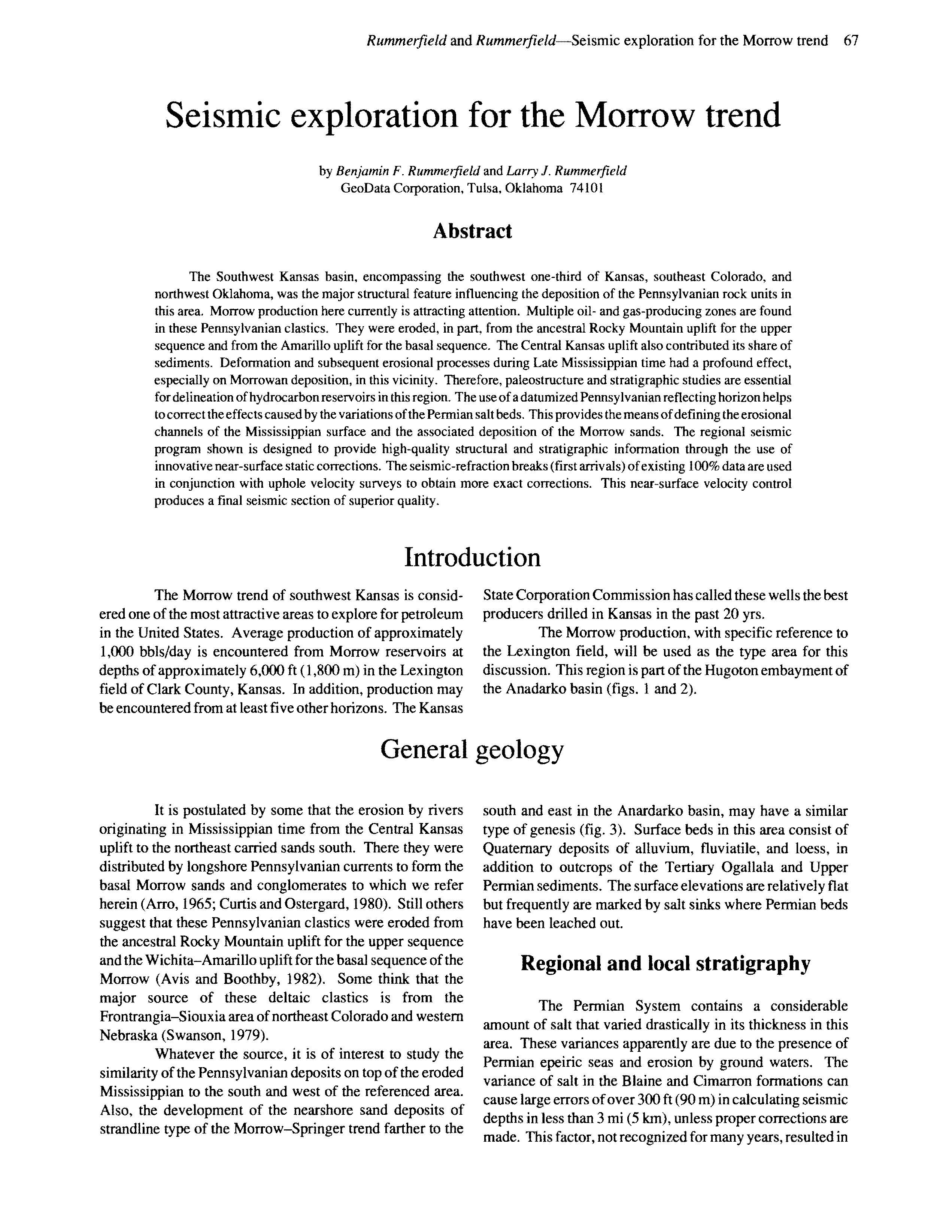Seismic exploration for the Morrow trend
DOI:
https://doi.org/10.17161/kgsbulletin.no.226.20495Abstract
The Southwest Kansas basin, encompassing the southwest one-third of Kansas, southeast Colorado, and northwest Oklahoma, was the major structural feature influencing the deposition of the Pennsylvanian rock units in this area. Morrow production here currently is attracting attention. Multiple oil- and gas-producing zones are found in these Pennsylvanian clastics. They were eroded, in part, from the ancestral Rocky Mountain uplift for the upper sequence and from the Amarillo uplift for the basal sequence. The Central Kansas uplift also contributed its share of sediments. Deformation and subsequent erosional processes during Late Mississippian time had a profound effect, especially on Morrowan deposition, in this vicinity. Therefore, paleostructure and stratigraphic studies are essential for delineation of hydrocarbon reservoirs in this region. The use of a datumized Pennsylvanian reflecting horizon helps to correct the effects caused by the variations of the Permian salt beds. This provides the means of defining the erosional channels of the Mississippian surface and the associated deposition of the Morrow sands. The regional seismic program shown is designed to provide high-quality structural and stratigraphic information through the use of innovative near-surface static corrections. The seismic-refraction breaks (first arrivals) of existing 100% data are used in conjunction with uphole velocity surveys to obtain more exact corrections. This near-surface velocity control produces a final seismic section of superior quality.
Downloads

